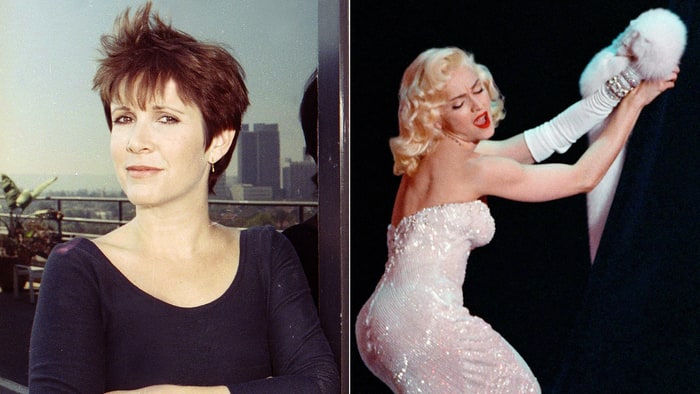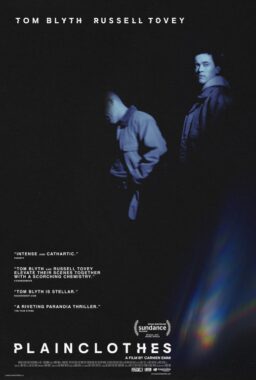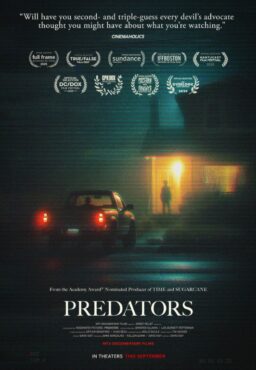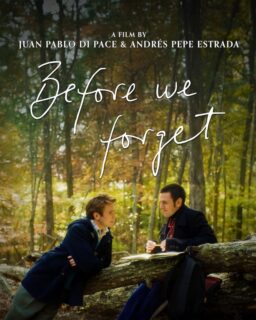1.
“True Confessions: Carrie Fisher Interviews Madonna“: A conversation from 1991 republished at Rolling Stone.
“Madonna and I had met many times over the years, but we had never actually had a conversation. It took this interview to bring us together – she as icon, I as inquisitor of icon (after all, I have already distinguished myself as friend of icon, relative of icon and ex-wife of icon). I had never done an interview before, and I don’t know that I will again. For me, this has all the makings of a waterloo. The first of the two sessions for this interview took place in the restaurant of the four seasons hotel in Los Angeles. Madonna wore gold lamé; I probably wore black. The last sessions took place in the offices of her manager, Freddy DeMann. Madonna wore a negligee; I probably wore black. I was late for that first meeting because a friend who had AIDS and who was staying with me had suddenly developed a fever. I called Madonna to say I was on my way. ‘You’re late,’ she informed me. I explained about my friend. ‘Well, OK, that’s a good excuse,’ she said. By the time of our final meeting the following week, my friend had died. He had had been extremely courageous, fighting an unbelievable battle. I relate this because it factored somehow into our meetings, making them even more bizarre and certainly changing the tone of our conversation from time to time. Madonna has no equal at getting attention. She often seems to behave like someone who has been under severe restraint and can now say and do whatever she likes without fear of reprisal. She delights in being challenged, in telling more than she had planned, in going further that she had intended. And judging from her new film ‘Truth or Dare,’ there is no ‘too far’ for Madonna. She has quality that I’ve always enjoyed in some people, mainly public ones: she will answer any question because she is genuinely interested in her own reply. A conversation or an interview, then, can become an opportunity for self-discovery, or just discovery. It’s a hearty mix of self-consciousness and self-confidence. It’s a type of courage, a free fall into the perplexing public now.”
2.

“Why We Can’t Forget Meg White—And The Sexist Way We Talked About Her“: An essential piece from Kayleigh Hughes at CASH Music.
“Around the time School of Rock was released, Meg’s drumming was described as ‘pancake-handed’ by Pitchfork. A year earlier, that same publication ran a review in which writer William Bowers calls her drumming ‘sloppy’ but celebrates himself for not objectifying her (‘Hooray for civilization, I didn’t talk covetously about Meg’s bod!’). And in 2002, Pitchfork published a 1100-word review that devoted a total of three sentences to the White Stripes drummer, with nearly all of them devoted to an analysis of her appearance: ‘She appears the prototypical indie girl– waifish, with pigtails and a nasty smirk. Yet she whips all of her 98 pounds into a tornadic fury like E. Honda’s hundred-hand slap.’ (Naturally, there’s no mention of Jack White’s weight, leaving readers to wonder what number of pounds he whips around.) Indeed, it’s often hard to untangle the criticism and evaluation of Meg White: The Musician from Meg White: The Female Body. In the fan communities, on the forums and the message boards and blogs, the criticism is most unyielding and brutal. The community discussion board on Pearl Jam’s official website has an ‘Official Meg White Can’t Play Thread,’ in which members fixate to a substantial degree on what they deem the offensiveness of her drumming, but much more often on her chest and general appearance. And in 2013 OC Weekly’s music editor Nate Jackson, in his fine journalistic pursuit entitled ‘The 10 Douchiest Drummers of All Time,’ asked of Meg White ‘Someone tell us, does this woman even qualify as a drummer?’ A written word has rarely felt as spat out as Jackson’s ‘woman.’”
3.

“Why ‘In the Army Now’ Is The Most Realistic War Movie Ever Made“: A bold argument from Francis Horton at Task & Purpose.
“The Basic Combat Training (BCT) Bones and Jack go through is at Fort Sill, Oklahoma, and the whole basic training sequence plays like a walk down memory lane, especially for older soldiers. There’s the old style sweatsuit PT uniform, the front-back-gos, the cattle cars for transportation, and the open-bay barracks that ensured you passed around at least three head colds during the nine weeks you spent together. The most telling detail is Jack complaining about his Army issue eyewear, the ever fashionable BCGs, or ‘birth control glasses.’ Back in the day, every soldier with an optical prescription got a pair, and they earned their name by being attractive on literally no one. Since 2012 though, new recruits are coddled by the government. They’re being issued fashionable glasses that don’t make you look like an unfuckable dweeb. What next, uniforms that are flattering to the figure? Moustache guidelines that don’t make you look like a pedophile Hitler? Privates today have it easy.”
4.
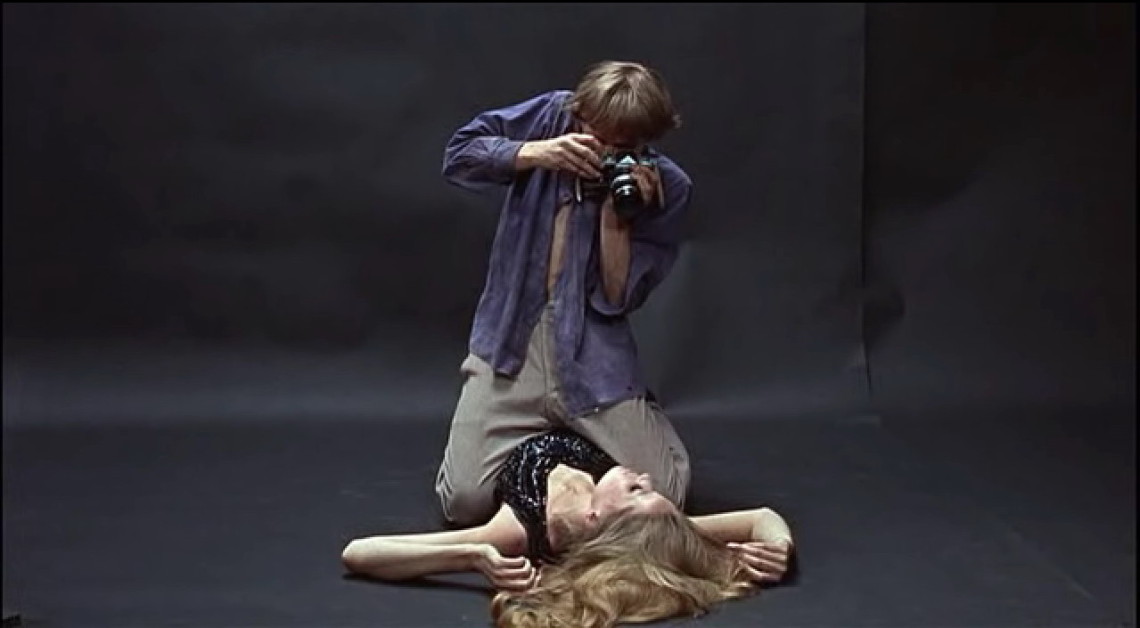
“The Disturbing Relevance of ‘Blow-Up’“: As analyzed by Elena Lazic at Movie Mezzanine.
“The specter of death and the lack of control becomes even more acute when Thomas finds that someone has stolen from his apartment all pictures but one, an ominous close-up of the dead body. Scared and unsettled, he drives into town and glimpses the mysterious woman again. The sequence in which he follows her through a crowded club where the Yardbirds are playing (a young Jimmy Page from Led Zeppelin fame can be seen on guitar) is one of those seemingly commonplace scenes that now, in the context of death, responsibility and danger, reeks of indifference, emptiness and selfishness. An angry Jeff Beck smashes his guitar and throws its neck into the crowd. Thomas catches it and fans fight to get this worthless piece of wood from him. This sequence is more than a metaphor for herd mentality, but an authentic example of it, which only makes it much scarier. That Thomas eventually throws the guitar neck away is a small, bitter victory for his newfound set of priorities over mass illusion. He only rids himself of the object once he is standing outside of the context in which it is valued. It is realistic and poignant how incomplete Thomas’ reckoning is. Confused, he does not understand exactly what it is that has changed inside him. There is no close-up on his face looking at the guitar neck he’s holding with an air of bewilderment. Rather, this is all to be understood by the active viewer. Indeed, ‘Blow-Up’ as a whole plays like an enigma for us to resolve. Earlier, there’s a sequence in which Thomas’ friend Bill, a painter, explains that his art is pure chaos until he finds a structure in it; only then does he know what his piece is about, the work emerging “like a detective story.” This moment is crucial as it clearly indicates to the viewer that the chaos of the film’s early moments will eventually find its structuring principle: namely, apathy.”
5.

“Things Romance Readers Are Sick of Hearing“: According to Kayleigh Anne at Bibliodaze.
“Think-pieces on the supposed dangers, problems and faults of romance novels are published with such regularity that you could almost set your watch to them. With Valentine’s Day round the corner, there seems to be a sudden increase in the number of them, with the occasion marking the one time of the year non-genre focused literary publications can discuss the category with little to no research and pass it off as seasonal. Another one came to the romance community’s attention today, and the response was as you’d imagine, mostly because the post itself fell into all the tired and familiar holes we’re dishearteningly used to. Each point feels as though it has been ticked off a bingo card to meet some kind of lazy assumption quota. As such, I often feel little to no desire to refute such generalizations – why should I bring my A game when they didn’t? However, it’s important to challenge these assumptions when confronted with them, especially since they’re so rooted in misogyny. So with that, here are a few of the many traps you’ll see in pieces written by people who don’t exactly read romance, and the best ways to respond.”
Image of the Day

“Blink Once for Yes” is an amazing podcast episode from Kartemquin filmmaker John Fecile about his family. It’s a must-listen.
Video of the Day
A great interview with Martin Scorsese, conducted by Krishnan Guru-Murthy of Channel 4 News, which covers his meeting with the Pope, his thoughts on Trump and his latest film, “Silence.”

